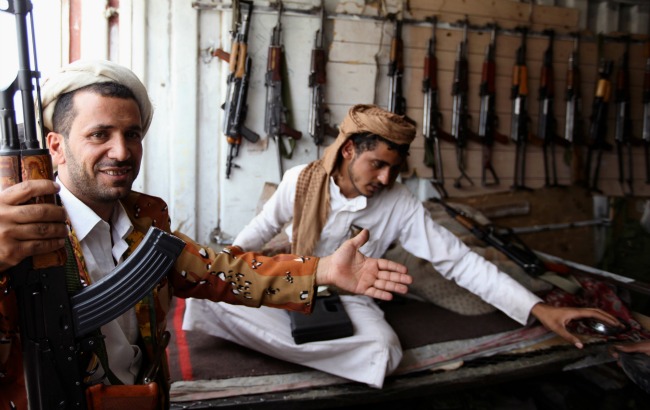How New Technology Can Help Us Track Illegal Guns
Visualization tools can help stop the flow of small arms, but governments should do more to help.

Small arms dealing is big business. In spite of international efforts to regulate the supply, the overall value of the annual trade exceeds $8.5 billion, according to latest estimates, with the United States accounting for almost half of all transactions. There are probably less than a billion weapons in circulation around the world, most of them in the hands of civilians, and just a tiny proportion in the arsenals of armies and police. There are easily thousands of manufacturers and hundreds of thousands of retailers scattered around the world. And this is just the authorized trade.
For more than a decade enlightened diplomats and activists have tried to improve transparency over the arms trade. In spite of some recent successes, such as the arms trade treaty, results have been mixed. This is because legal weapons and ammunition are often diverted -- by default and design -- into the illegal market. And this is hardly surprising: weapons routinely disappear on the way to importing countries, or take a walk after they arrive. The situation is even more complicated in war zones where leftover arms and munitions find their way into black markets and the hands of gangs, vigilantes, and terrorists.
Countries registering the sharpest uptake in arms imports are often those with the highest rates of gun violence. For example, five of the top 10 most violent countries in the world (as measured by the number of homicides per 100,000 people) are in Latin America and the Caribbean. Countries such as Brazil, Colombia, El Salvador, Guatemala, Honduras, Jamaica, and Venezuela exhibit violent death rates several times the world average. Virtually all of these states are also prolific buyers (and in some cases sellers) of handguns, assault rifles, and ammunition.
Oddly, very little is actually known about the scope and scale of the small arms and light weapons trade. Although most exports and imports are concentrated in a narrow bandwidth of countries -- the United States, Italy, Germany, Brazil, China, Russia, and Belgium stand out -- not much is understood about trends and patterns elsewhere. The primary source of official information, the United Nations Customs Database or COMTRADE, is based on voluntary reporting. But countries seldom disclose all of their annual sales and acquisitions, fearful of giving away trade secrets. In other words, there is a major dearth of data.
The good news is that the technological revolution is improving our understanding of how the small arms trade works. One example of this is the mapping arms data (MAD) visualization app, based on a tool we originally developed with Google Ideas. This app maps out tens of thousands of records arms and ammunition exports and imports from over 200 states and territories between 1992 and 2011. It shows that by financial value, roughly 40 percent of all transfers during this period consisted of civilian style arms -- handguns and rifles. Another 40 percent involved ammunition. And just over 10 percent included military-style arms. The interactive map has helped diplomats track the volume and value of reported deals during arms control negotiations at the United Nations.
A better understanding of the small arms and ammunition trade can help promote accountability, and it can also help us anticipate the next hot spot. For example, MAD documented dramatic spikes in military small arms exports to Libya in 2009, some two years before the 2011 intervention. It also registers a steady growth in arms and ammunition exports to Afghanistan since 2001. What is more, it shows how imports to Sudan from Iran skyrocketed in 2003, the year the Darfur genocide kicked off. Meanwhile, MAD illustrates the massive increase in arms and ammunition imports by Mexico since 2006 when then-President Calderon announced a war on drugs. It is only by visualizing these trends and opening them up to the public that real scrutiny can begin.
While offering new forms transparency, visualization tools like MAD only resolve part of the data deficit. At a minimum, governments need to start providing more information on what they are producing, selling, and gifting. More regular reporting can build confidence and trust, and it can also help anticipate the outbreak of conflict. Even more promising opportunities exist with new technology and social media. It will soon be possible to prevent the diversion of guns from the lawful to the illegal market by marking every new (and old) weapon with a unique identifier, whether a serial number or a radio frequency identification chip. This will allow investigators to track errant products, interdict illegal shipments, and hunt down arms caches. The technology we need is finally within our grasp, and its time to go out and make use of it.
